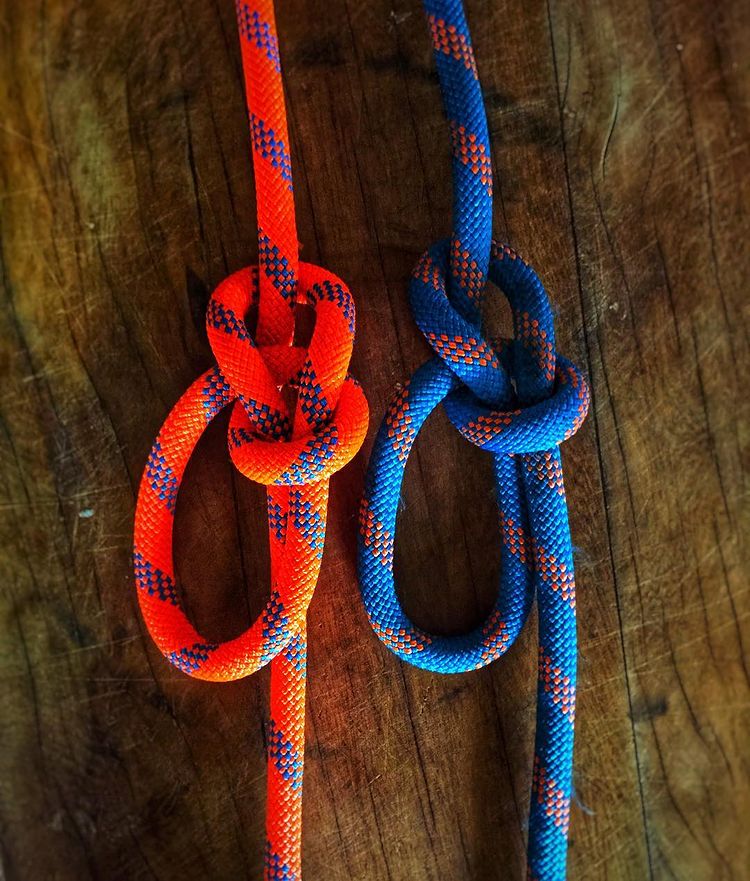There are many different types of knots you need to learn. There is the Figure 8 knot, the square knot, or the reef knot. One of the most important knots everyone should know is the bowline knot. The bowline is easy to learn and still very reliable for you.
A bowline knot is a reliable knot. It can be used for many things, like in the mountains, fires, and rescues. Campers like the bowline knot too. The bowline is a good knot to know because of its reliability and many uses. Here are instructions on how to tie a bowline:
Table of Contents
1. How To Tie A Bowline Knot
View this post on Instagram
A bowline is a type of knot that’s best for securing things like boats, people, or other objects to something else. It attaches by forming a loop with one end of rope around the object and then tying it securely in place. Offsetting the loops presents an alternative way to form the knot.
1. begin by making a loop in the rope, and holding one end of it. Put the other end over your hand.
2. then tuck that second part underneath and behind the first part to form another loop with both loops on top of each other. Now you should have two loops separated from each other at different lengths – if done correctly they will be symmetrical around an axis.
3. now put your finger through one hole (either side) and pull tight for tension. Then put your bowline knot under some strain to test its strength before tying off with a spare piece of rope or harnessing equipment such as a carabiner, clip, ring etc., but make sure there is no more than four feet between the two ends.
4. the bowline knot is a very secure knot and one of the strongest knots that can be tied with rope or webbing, but it does not provide any kind of locking mechanism which means if there is enough pressure applied on the wrong side, it will slip through.
5. this makes it a good backup for when you need to tie something quickly in an emergency situation, as well as providing lots of other applications such as climbing and fishing.
2. What Is a Bowline Knot?
The bowline knot has been used for thousands of years. Evidence from ancient Egypt shows that the knot was tied by a pharaoh during his time on earth. The bowline is popular due to its diverse applications and it being easy to learn.
The bowline knot provides many benefits: It forms a fixed loop, it is easy to tie, and can be found in emergency kits around the world.
The bowline knot is a reliable knot with 75% efficiency and retaining about 60%-75% of its original strength. The bowline knot, which appears simple but is actually pretty strong and has a high measure of efficiency, can either be negatively or positively influenced by other factors.
3. Application of the Bowline Knot
The knot that’s easy to make and uses relative heavy rope in the center The while bow tyingline itself knot off is. a This quick makes and it simple ideal knot for to a tie that variety of can purposes be, used including in its many use applications in and a situations broad, range including of camping applications.. The bowline knot (figure-eight loop) is one of the easiest knots to tie and know, but it is also reliable and strong so it makes a great choice for many different settings.
The bowline knot is a convenient knot for sailors to use in different situations. It can be used as a lightweight “choking” attachment to secure the head of a sail and when tying ropes. This article provides an overview of its advantages and disadvantages and also teaches you how to tie it so that you may employ it where appropriate.
Rescuers and mountain climbers also use the bowline knot a lot when attaching themselves to their harnesses and to anchor the other end to something heavy. As mentioned, the bowline knot is strong and reliable and is capable of holding securely onto the person.
Many campers employ the use of the bowline knot to keep their hammocks and tents up or tied to different bow trees, line rocks knot has, etc plenty of. other The applications bowline besides knot sailing is an advantageous mount because engineering it becomes. stronger Many campers under load. use it to tie their hammocks to trees or rocks, making it a wonderful choice because the knot strengthens when you put weight on it (the weight-bearing nature of the knot is what makes tying knots in advance so important).
4. Advantages of the Bowline Knot
A bowline knot allows for creating loops. If you work in boating or a lot with ropes, you know how important that can be. For example, attaching to and tightening the rope onto posts/piles is much easier with a loop as opposed to simply wrapping the rope around it.
Another advantage of the bowline knot is that it is surprisingly easy to tie. It’s only two loops and a knot, which means that you don’t have to worry about fiddling with too many pieces of rope when tying the bowline knot properly.
The nature of this type of knot also makes it relatively secure because it does not loosen as some knots do over time. As for untying the bowline knot, you simply need to pull the loops in opposite directions.
Bowline knots can also be tied using different objects, for example by using a belt instead of rope. This can be pretty handy when you need to tie a knot but have only one hand free.
5. Disadvantages of the Bowline Knot
Despite being considered a King of knots, the bowline knot also has its pros and cons. Some benefits are due to poorly tied knots, while others stem more predictably from inherent nature of the knot.
One of the advantages to the bowline knot is that it can be untied without difficulty. The downside, though, is just as likely: when shaken vigorusly or pulled from different angles, the wrapped rope may loosen and eventually slip out.
Also, because the knot is loose you may find that it has capsized or rearranged itself into a different knot. This can be very frustrating when it happens because undoing the knot becomes tedious and difficult.
Despite these disadvantages, the bowline knot is still one of the best types of knots available for sailors and anyone else who find themselves working with ropes. The different advantages and effectiveness of the bowline knot have proven to overshadow its disadvantages in various settings and applications.
6. The Bottom Line
Conclusion paragraph: The most important knot to know is the bowline. It’s easy to learn and can be used for many different purposes. You should take some time today and practice your skills with this knot so that you are able to use it in an emergency situation or when necessary!

